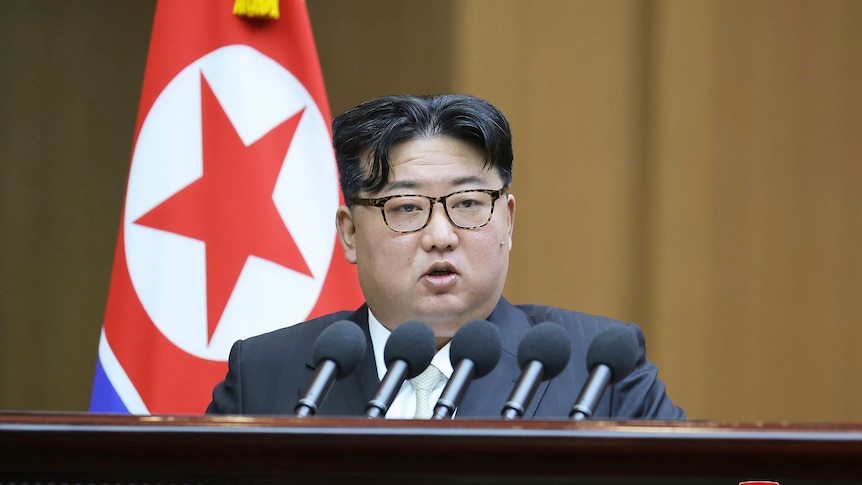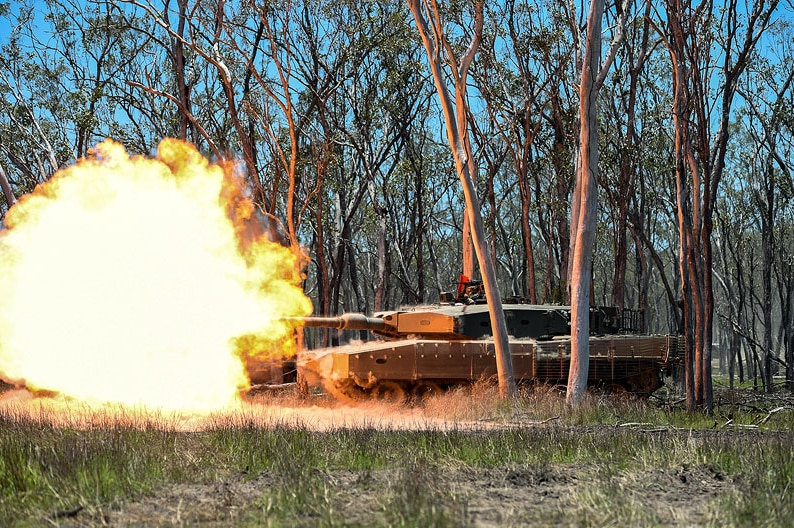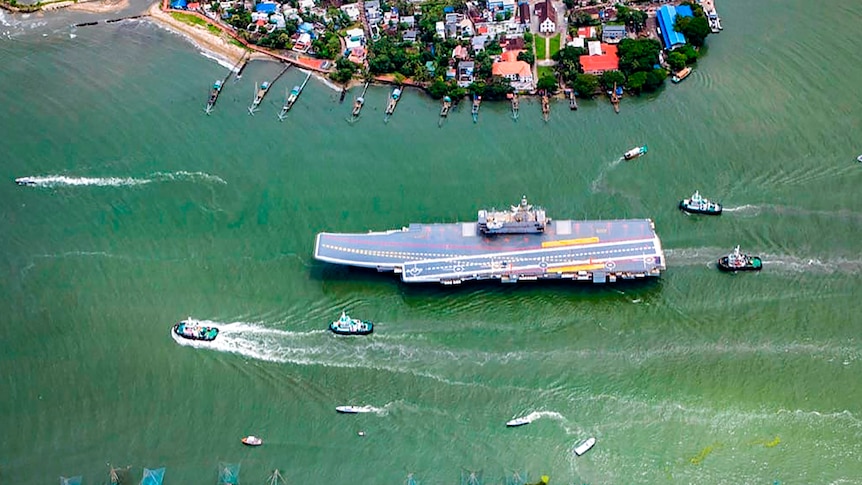Australia has faced ongoing challenges in recruiting the desired number of personnel for its defense forces, despite efforts to enhance compensation and benefits.
In the recent Senate hearing, it was disclosed that the military is currently operating at a 7% manpower deficit. Specifically, the army is lacking 3,000 personnel, the navy is short by nearly 900 individuals, and the air force is facing a shortage of over 500 personnel.
With escalating worries regarding a possible clash between the US and China, Russia’s rise as a provocateur in Europe, and a more confrontational North Korea, there have been proposals to reinstate conscription or a type of national service by the government.
However, challenges in recruiting personnel are not unique to Australia in the Asia-Pacific region.
Challenges in Recruiting in the Asia-Pacific Region
Asia-Pacific recruitment challenges are exacerbated by the rapidly aging populations, leading to a decrease in the pool of eligible recruits, particularly affecting developed nations in North-East Asia.
Andrew Oros, a professor at Washington College specializing in political science and international studies, is currently working on a book that delves into the impact of Asia’s “greying” populations on security. Oros emphasized that the influence of demographic shifts in the Indo-Pacific region on defense has been widely underestimated.
In an interview with the ABC, he described the current scenario as unique, presenting complex outcomes rather than straightforward results.
Is North Korea preparing for conflict?
With North Korea shifting away from the longstanding objective of reunifying with South Korea, various interpretations are emerging regarding the future.

**Asia-Pacific Recruitment Challenges: Addressing Aging Populations and Military Strategies**
In the Asia-Pacific region, countries like Japan, South Korea, Taiwan, and China are facing the significant challenge of rapidly aging societies. The impact of this demographic shift on national security strategies varies across these nations. While South Korea, Taiwan, and China employ a mix of voluntary recruitment and conscription in their military forces, Japan relies solely on a volunteer-based defense system.
According to Professor Oros, the timing of demographic changes in each country plays a crucial role in shaping their military readiness. Japan, being the first to experience this aging trend, has had more time to adapt. On the other hand, South Korea is projected to surpass Japan in terms of aging population by 2050, with China facing a steep demographic decline in the 2030s due to the abrupt implementation of the One-Child Policy in the late 1970s.
To combat personnel shortages resulting from aging populations, militaries worldwide are turning to advanced technologies such as drones, automated systems, and artificial intelligence. These innovations aim to reduce the dependency on human resources within military operations. Professor Oros believes that technological advancements could help mitigate the challenges posed by shrinking and aging populations in the long run.
Meanwhile, countries in the region are exploring other strategies to maintain a strong military presence. For instance, the Japanese Self-Defence Forces (SDF) are actively promoting voluntary enlistment through creative advertising campaigns inspired by popular culture. They are also enhancing benefits and conditions for recruits and expanding the pool of potential candidates by raising the upper age limit for enlistment to 32 years old.
In conclusion, as the Asia-Pacific region grapples with the complexities of aging populations and recruitment challenges, leveraging technology and implementing innovative recruitment strategies are vital steps towards ensuring robust military capabilities in the face of evolving demographic trends.
Challenges in Asia-Pacific Recruitment
South Korea is currently facing a significant decline in its birth rate, with the country’s fertility rate, which is already the lowest globally, experiencing a sharp decrease. This decline is primarily attributed to women in South Korea prioritizing their career advancement, leading them to postpone starting a family or opt not to have children.

**Asia-Pacific Recruitment Challenges in Military Forces**
In recent news, Japan’s Defence Ministry made headlines by announcing the relaxation of rules regarding hair length within the military. There are even discussions about potentially permitting individuals with tattoos to enlist, despite the existing cultural stigma against it.
Shifting our focus to Taiwan, back in 2013, the country contemplated eliminating conscription entirely after reducing mandatory military service from one year to just four months. However, due to a diminishing pool of recruits and escalating concerns about a possible invasion from mainland China, the government decided in 2022 to reverse this decision and extend the conscription period back to a year. The first group subjected to this longer service term began their tenure earlier this year.
Meanwhile, South Korea has been enhancing the appeal of a military career by enhancing remuneration and working conditions. Additionally, there is an ongoing discourse about the potential inclusion of women in the conscription program.
In China, although there is a conscription law in place, the military heavily relies on voluntary recruitment. Despite high levels of youth unemployment, the People’s Liberation Army (PLA) continues to receive a substantial number of applications for its military institutions. Graeme Smith, associated with ANU’s Department of Pacific Affairs, noted a shift in societal perceptions towards the military in China. He observed that individuals from middle-class backgrounds, who traditionally wouldn’t have considered a military career, are now enlisting due to the PLA’s revamped marketing strategies that resonate with feelings of nationalism.
However, the PLA is encountering challenges in recruiting highly skilled individuals as it endeavors to modernize swiftly. To address this issue, Beijing introduced special wartime clauses to its conscription law last year, enabling a rapid increase in troop numbers and prioritizing recruits with expertise in cyberwarfare.
Addressing Asia-Pacific Recruitment Challenges
Countries in the Asia-Pacific region are actively seeking to increase the participation of women in their armed forces. This initiative includes extending the service tenure of existing personnel, retaining officers for longer periods, and retaining conscripts beyond their mandatory service period, as highlighted by Professor Oros.
Nevertheless, this endeavor poses financial challenges, such as the need for higher salaries and improved housing facilities for military personnel.
An interesting observation made by Professor Oros is Japan’s commendable efforts in recruiting more women into its military. Recent reports indicate that over 20% of new recruits in Japan are women, a significant increase compared to the previous representation of women in the military.
Despite this progress, the sustainability of this trend remains uncertain. There have been instances of misconduct and mistreatment of female members within the Self-Defence Forces, raising concerns about the long-term retention of women in the military.

Asia-Pacific recruitment challenges
Japan aims to increase the participation of women in volunteering for the Self-Defence Forces, as reported by Reuters photographer Issei Kato.
Impact on Different Military Forces
According to Professor Oros, the aging population in South Korea is expected to have a significant impact on its military, especially since the country already enlists most of its young men through conscription.
He mentioned that the number of eligible young men has decreased by half over the past 20 years and is projected to decrease further in the next two decades, leading to a substantial reduction in military personnel unless alternative solutions are identified.
In contrast, Japan has historically encountered difficulties in recruiting for its Self-Defence Force, partly due to the prevailing anti-militaristic sentiments in the country post-World War II.
Interestingly, Japan faces relatively fewer recruitment challenges compared to South Korea and Taiwan, as Japan has traditionally relied more on technological advancements and enhanced labor productivity, given the absence of conscription, which is prohibited under Japan’s postwar constitution.
While some Asian nations with aging populations are grappling with declining recruitment numbers, not every country in the region is equally concerned about this issue.

Singapore is preparing to enlist fewer individuals in the armed forces as the population ages, facing recruitment challenges in the Asia-Pacific region. The country, known for utilizing conscription to strengthen the Singapore Armed Forces (SAF), acknowledges the necessity of downsizing its military personnel due to the shrinking working-age population. Despite this, Defence Minister Ng Eng has emphasized that advancements in technology and equipment will mitigate any potential issues. Dr. Ng expressed confidence in the reduced manpower requirements facilitated by modern militaries and equipment, stating that there is no expected shortfall in meeting SAF needs.
Exploring Asia-Pacific Recruitment Challenges
In the dynamic Asia-Pacific region, the issue of a shrinking pool of recruits is less prevalent, especially in countries with a more youthful population.
Natalie Sambhi, the executive director of Verve Research, an Australian security think tank, highlighted that joining the military is often viewed as an appealing career choice in emerging nations.

Addressing Asia-Pacific Recruitment Challenges
Natalie Sambhi, holding the position of executive director at Verve Research, highlighted the perception of the military in South-East Asian countries. Despite the relatively low pay, the military remains a revered profession offering stable employment opportunities. This is especially significant in regions where educational and job prospects are limited for the youth.
According to Justin Hastings, a professor specializing in International Relations and Comparative Politics at the University of Sydney, Indonesia, with its sizable young population of approximately 280 million, faces no difficulties in attracting individuals to join its armed forces. In some cases, individuals have expressed a willingness to pay for military service, viewing it as a pathway to financial gain and social advancement.
Thailand, on the other hand, has taken steps to downsize its military forces and is contemplating the gradual phasing out of its conscription program based on a lottery system. These shifts reflect evolving trends in military recruitment strategies within the Asia-Pacific region.
India Boosts its Defense Industry
India is strengthening its defense industry to maintain its position as the leading naval force in the Indian Ocean. However, in the Asia-Pacific region, China is also enhancing its maritime capabilities.

### Asia-Pacific Recruitment Challenges: Addressing Country-Specific Issues
Each country in the Asia-Pacific region faces unique challenges in their recruitment strategies. For instance, India has been focusing on altering the composition of its defense forces rather than simply increasing its numbers. New Delhi recently introduced the Aginpath program, targeting young individuals aged between 17 and 21. Instead of offering lifelong positions with pensions, recruits under this program sign four-year contracts. After this period, only the top 25% are retained, while the rest receive a lump sum payment. This initiative aims to ensure that frontline troops are younger and more physically fit, ultimately reducing ongoing pension costs.
In Malaysia, the government is striving to diversify its armed forces by recruiting a higher percentage of “non-bumiputra youths,” a term referring to Malays and indigenous people rather than individuals of Indian or Chinese descent. Additionally, Malaysia has reintroduced a 45-day national service training program for school leavers to prepare them for roles in the police, civil defense, or emergency services, promoting social cohesion and nation-building among the youth.
Meanwhile, Myanmar’s military junta has recently enforced a conscription law that had long been dormant due to its unpopularity. This move comes as the junta faces challenges in its conflicts against pro-democracy and ethnic rebel groups, indicating a shift in recruitment strategies driven by the evolving political landscape.
In 2022, Singapore took a progressive step by establishing the Digital and Intelligence Service (DIS) as the “fourth arm” of its armed forces. This decision reflects the changing nature of warfare, emphasizing the importance of cybersecurity in modern military operations. President Halimah Yacob highlighted the significance of this new service in defending against digital threats, aligning with the evolving landscape of security challenges in the region.
The emergence of the DIS underscores the need for a new type of warrior equipped with advanced technological skills. As military operations increasingly rely on cybersecurity measures, Southeast Asian nations must adapt their recruitment criteria to attract technologically adept personnel. Dr. Sambhi emphasized the necessity for militaries to evolve in response to the growing importance of cybersecurity, indicating a shift in traditional recruitment paradigms across the region.
Challenges in Recruiting in the Asia-Pacific Region
Challenges in Recruiting in the Asia-Pacific Region
Myanmar’s decision to implement compulsory military service is anticipated to result in unforeseen outcomes.

When it comes to the hurdles faced in recruiting in the Asia-Pacific region,
Challenges in Recruiting in the Asia-Pacific Region
In South Korea, the fertility rate, which is currently the lowest in the world, has decreased once more.

Challenges in Recruiting in the Asia-Pacific Region

- Explore more about:
- Army
- Asia
- Australia
- China
- Defence Forces
- Defence Industry
- Japan
- Korea, Democratic People’s Republic Of
- Korea, Republic Of
- Malaysia
- Singapore
- Taiwan
- United States
- Unrest, Conflict and War
- Vietnam
- World Politics


